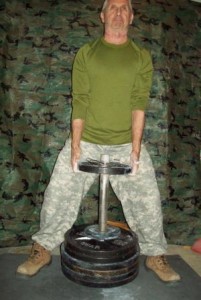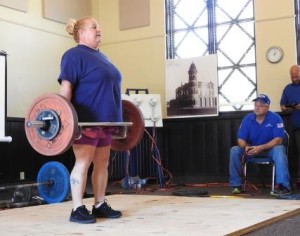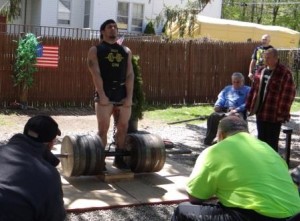Championships in the USAWA
By Al Myers
The USAWA hosts several different Championships throughout the year, with each representing different areas of strength emphasis. Next weekend will be the USAWA Club Championships, hosted by Dave Glasgow at the Ledaig HA facility. It is one of many Championships in the USAWA held throughout the year.
I have referred to the Championships as our “Signature Events” in the past. Several of these Championship Events have began since I became involved on the Executive Board of the USAWA. That’s something I’m proud of. The USAWA is truly an All Round Weightlifting organization and has many different and unique lifts – so much virtually any lifter can find an area they can excel at. That’s the primary purpose of these different Championships – to allow lifters who like to specialize in different lifting arenas within the USAWA to be able to showcase their lifting skills.
Another thing I am proud of with the Championship Events is that they have ALL been done EVERY year since they began. No missed years!! Now some years it’s been a challenge making them happen, but we always do.
These are the 8 Championship Events in the USAWA.
USAWA SIGNATURE CHAMPIONSHIP EVENTS
| CHAMPIONSHIP | YEARLY DATE | LOCATION | DIRECTOR |
| Grip Championships | 2nd weekend of Feb. | Dino Gym | Al Myers |
| Club Championships | 2nd or 3rd weekend of July | Ledaig HA | Dave Glasgow |
| Heavy Lift Championships | 1st or 2nd weekend of May | rotates | rotates |
| National Championships | 3rd or 4th weekend of June | rotates | rotates |
| Presidential Cup | 1st or 2nd weekend of Aug | Habeckers Gym | Denny Habecker |
| Team Championships | 3rd or 4th weekend of Aug | Dino Gym | Al Myers |
| Old Time Strongman Championships | September | KC Strongman | Eric Todd |
| Postal Championships | December | Postal | Denny Habecker |
The MOST IMPORTANT Championship in the USAWA is the National Championships. The reason is that it recognizes the best ALL-ROUND lifters in the organization. It contains a selection of ANY lift within the organization (out of around 200), and often contains a good balance of all types of lifting. Several years ago I had a good discussion with the late Dale Friesze, and he felt the name NATIONALS should just be used for the National Championships to identify its significance as the only true Nationals in the USAWA. Well, I couldn’t argue with him on that so from that point on I have been referring to our yearly BIG MEET as the National Championships and the rest of these important meets as Championship Events or just Championships. This hasn’t always been the case, and in years past meets like the Heavy Lift Championships was called the Heavy Lift Nationals. But from now on it will be called the Heavy Lift Championships.
Each of these other Championships represent unique areas within the USAWA. The Grip Championships only includes official USAWA lifts that test the grip, the Heavy Lift Championships contain only Heavy Lifts, and the Old Time Strongman Championships only include OTSM lifts. The Club Championships is unique in that it recognizes the top performing USAWA club, as it is scored using a team score of 3 club members added together. The Presidential Cup is hosted by the USAWA President to recognize a top Record Day performer. Think of it as the Championships of Record Days. The Team Championships is the championship that recognizes Team Lifting (2-man, 2-women, 2-person). The Postal Championships recognizes the top performers in the postal meets. The beauty of having these different Championships is that if you have special skills in lifting you can find an avenue in which you can compete in a specialized Championship. It’s just one of the ways that the USAWA gives opportunities to lifters who like to specialize in the different areas of all-round strength.
As secretary, it is my job to sanction events/competitions. Since these are our organizations most important events (ie Signature Events) I try not to allow other meets to be sanctioned on the same day as one of our Championships. I know this hasn’t always been the case, but from now on I will try to make sure there are no other USAWA meet conflicts on the same day as one of these Championships. Now since I have announced the “yearly dates” of these Championships, the Championships have “first dibs” on those dates for sanction. This way no one will have any USAWA reason NOT to attend any of the USAWA Championships!


